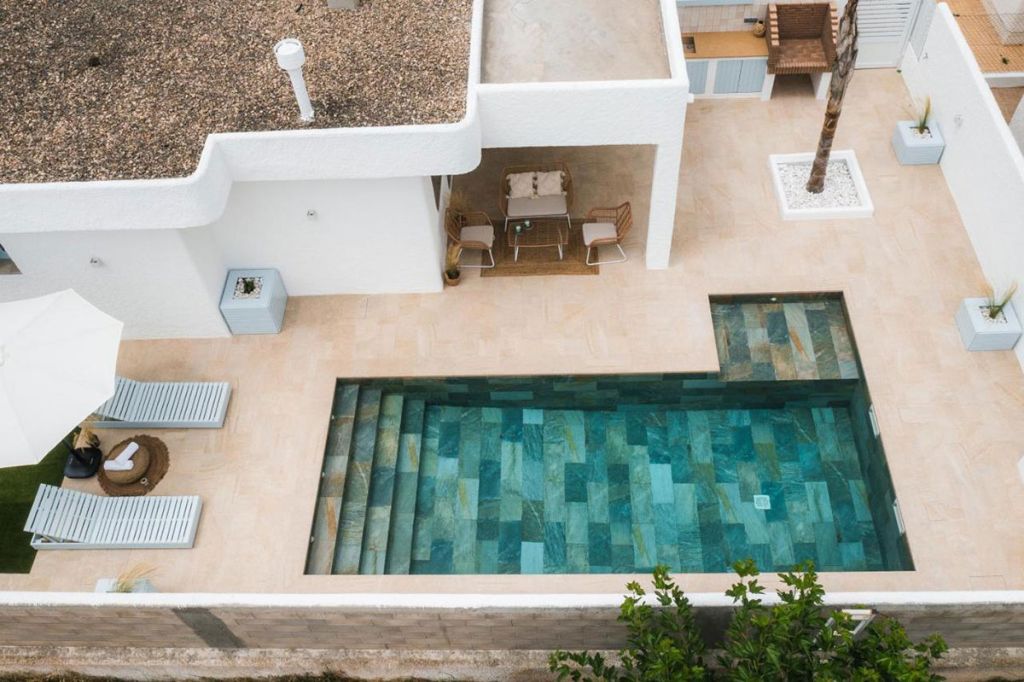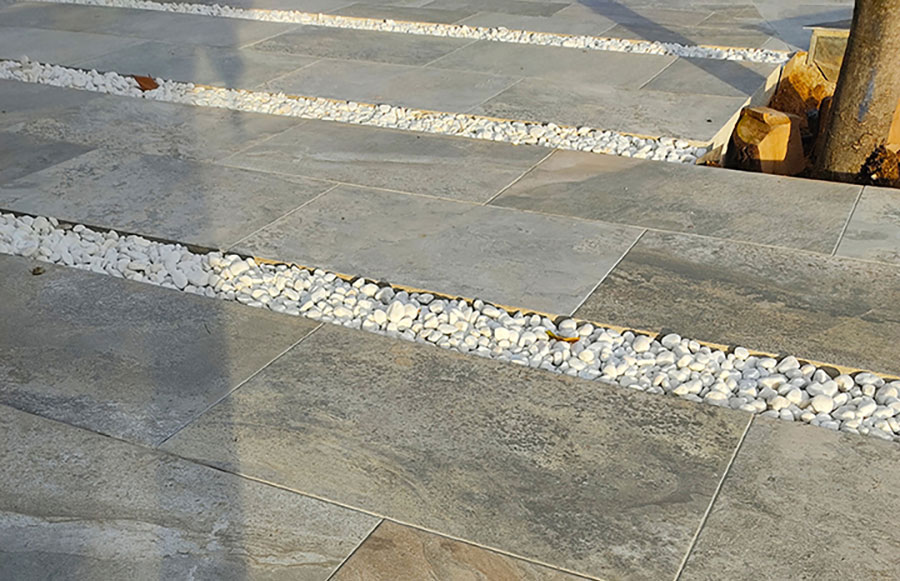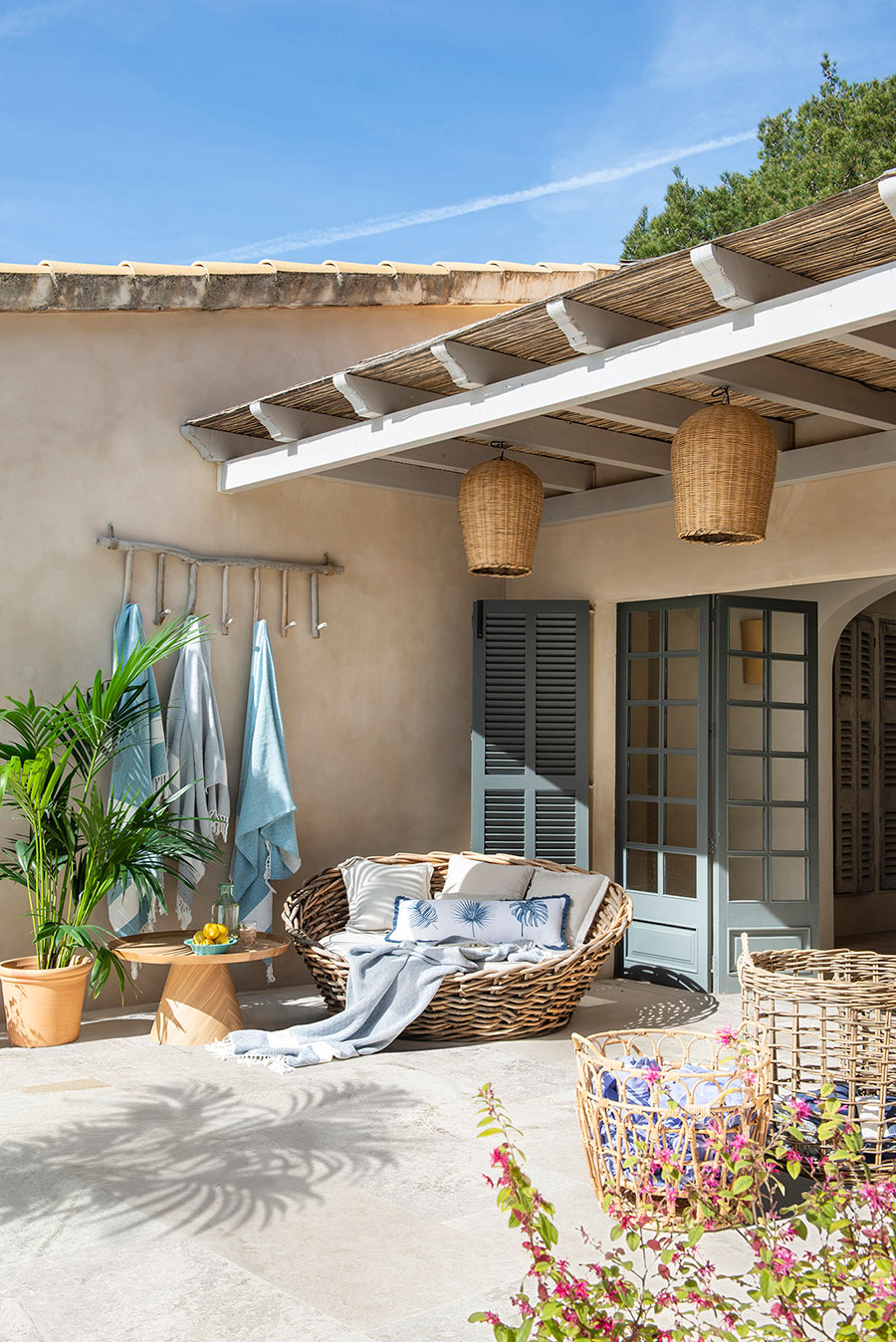Which outdoor flooring heats up the least in the sun?

How much does porcelain stoneware heat up? This is one of the most frequently asked questions we receive. We are also often asked what athermic tiles are, whether they work and whether they heat up at all. In this post you will find the answer to all these questions.
We will tell you which types of flooring heat up the least, how to calculate a material’s degree of heating, what athermic tiles are and what an SRI value consists of.
We would like to start with a big THANK YOU to our lab team for providing us with the necessary technical information in such a clear and succinct manner.
How to choose an outdoor paving and get it right
We will now dive into the technical aspects to unearth all the details. But first, we’ll let you know in advance our conclusions and recommendations. This is very useful information that will help you to make the best decision when it comes to paving your terrace or pool.
- Color is the main property that determines the degree of heat that a tile will reach.
- All tiles of mineral origin, porcelain stoneware, cements or natural stones heat up differently depending on their color. The same goes for athermic tiles. In all cases, light colors heat up less than dark colors.
- Does wood heat up less than tiles of mineral origin? No, certain kinds of wood can even reach higher temperatures than porcelain stoneware. In our laboratory we have conducted tests with various materials to verify this.
- How to choose a color according to the area where I live? Generally, in very warm areas we recommend using the lightest colors possible because these are the ones that heat up the least. In the north and in colder regions you can experiment with dark colors that tend to retain more heat. And in mild climates, such as the Mediterranean coast, light tones, as well as neutral and ochre colors, work best because the sun’s radiation is not too extreme.
How do we calculate the surface temperature of a pavement exposed to sunlight?
The two parameters that help us to measure a tile’s degree of heating are its absorptance and its emissivity. We will now analyze from a technical point of view what each of them consists of.
Absorptance is the amount of solar radiation absorbed by the paving.
When sunlight strikes an opaque paving, part of the radiation is reflected, and the rest is absorbed by the tile.
The reflected fraction is known as solar reflectance and the absorbed fraction, as solar absorptance. The sum of both fractions must be 1.

The darker the color of a tile, the higher its absorptance and the lower its reflectance. This simple formulation tells us that dark colors heat up more than light colors because they absorb more heat than they radiate.
Emissivity is the amount of infrared energy emitted by the paving.
By absorbing part of the solar radiation, the paving becomes warmer than the surrounding environment. The absorbed heat is transferred to the air and its surroundings through convection and radiation.
Convection is the transfer of heat through air circulation and depends mainly on wind speed.
Radiation is the transfer of heat through the paving’s emission of infrared energy. It depends on its ability to emit infrared energy and is technically known as emissivity. It is measured according to the amount of infrared energy emitted by a material compared to a perfect black body, which has an emissivity of 1.
Building materials of mineral origin usually have an emissivity level ranging from 0.85 to 0.95. This data indicates that the only outstanding difference between the different materials of mineral origin with respect to temperature is their color.

Dark colors emit less infrared energy than light colors and therefore heat up more.
What are Athermic Tiles?
Athermic tiles are usually made of white cements mixed with minerals such as granite, marble or perlite. There are also those who consider natural stone tiles to be “athermic”. In all cases its origin is mineral.
We have seen that paving heats up less if it absorbs little solar radiation and/or emits a lot of infrared energy. In addition, we know that the infrared emissions of building materials of mineral origin are very similar. Therefore, it will be the absorption of solar radiation that dictates how much the paving heats up. And absorption depends on the color of the tile: a property that is not exclusive to athermic tiles.
We therefore conclude that the so-called “athermic tiles” behave in the face of heat in exactly the same way as porcelain stoneware and any other light-colored tiles of mineral origin.

The degree to which different mineral-based floorings heat up depends on their color: light colors heat up less than dark colors in all cases.
What is the Solar Reflectance Index (SRI)
The SRI is a very useful parameter when designing energy efficient buildings or choosing flooring for swimming pools and terraces.
To determine the SRI of a tile, the ASTM E 1980-11(2019) standard establishes a procedure for calculating the reflectance and emissivity of a material according to three different environmental conditions: light, moderate and strong wind.
With these values we can calculate the relative surface temperature that a material will reach with respect to a white surface and a black surface. This temperature is what is defined as the SOLAR REFLECTANCE INDEX (SRI).
The SRI can be a value of anything between 0 (black surface) and 100 (white surface). A paving with an SRI closer to 100 will attain lower temperatures.
The lighter the color, the higher its SRI value, as in, the closer it will be to 100, and therefore the less it will heat up in the sun.
__
We hope to have answered all your questions about how the sun’s heat affects porcelain tile paving and mineral-based materials. If you want, we now encourage you to browse our colors and choose your favorite. After all, you now know that light colors heat up less than dark ones.
If you have any questions, please contact us at info@rosagres.com. Thank you for being here!

